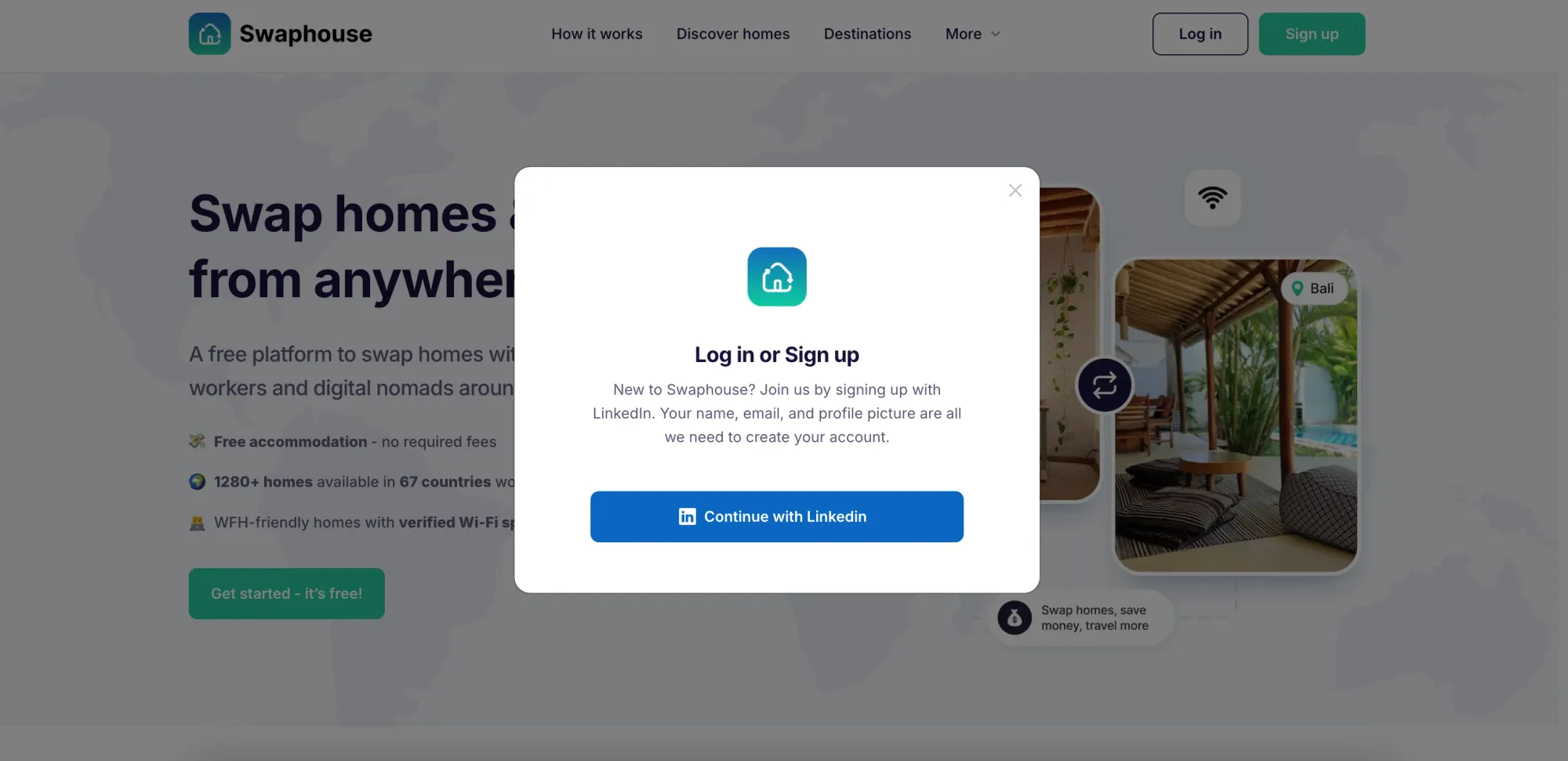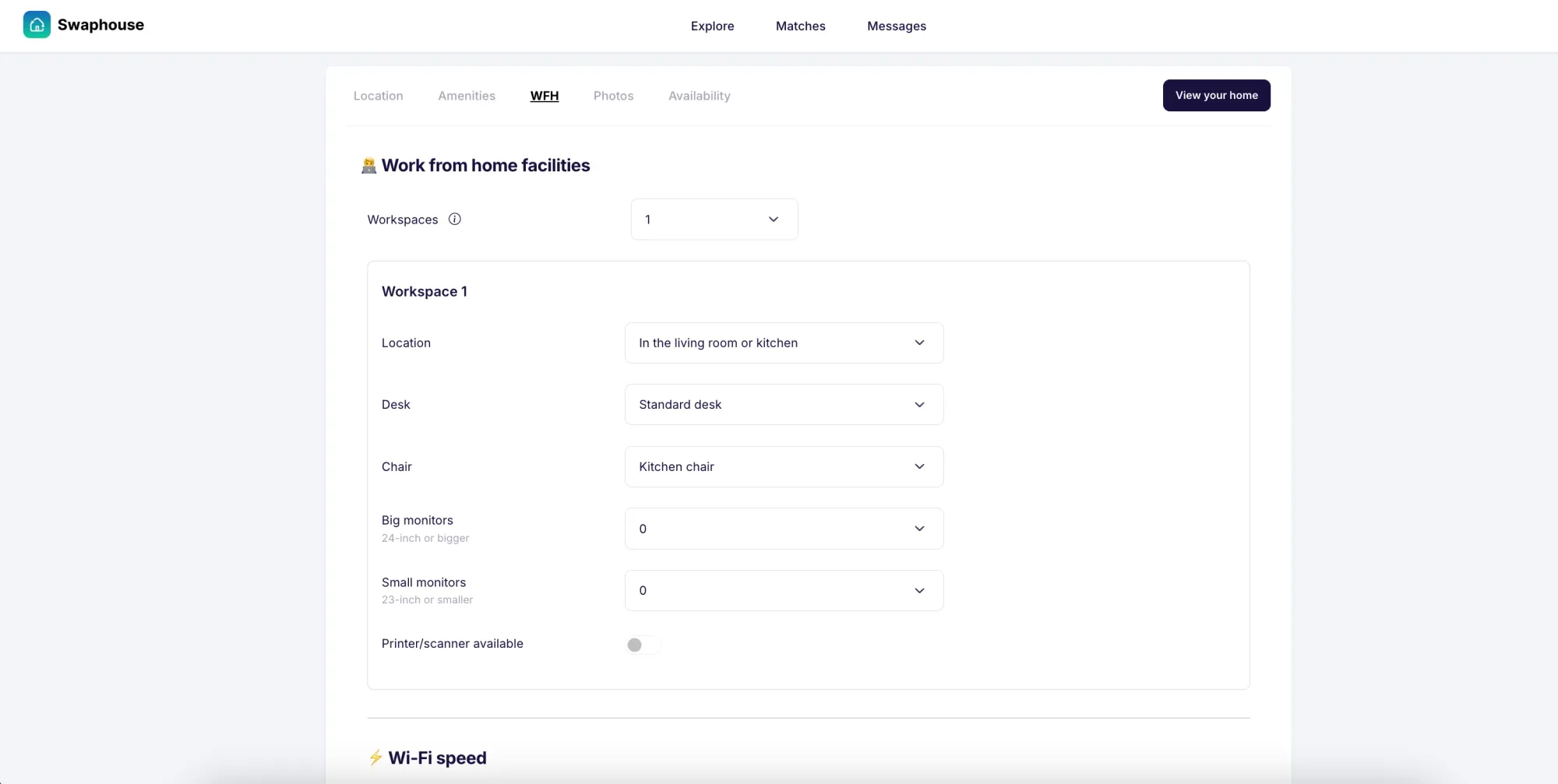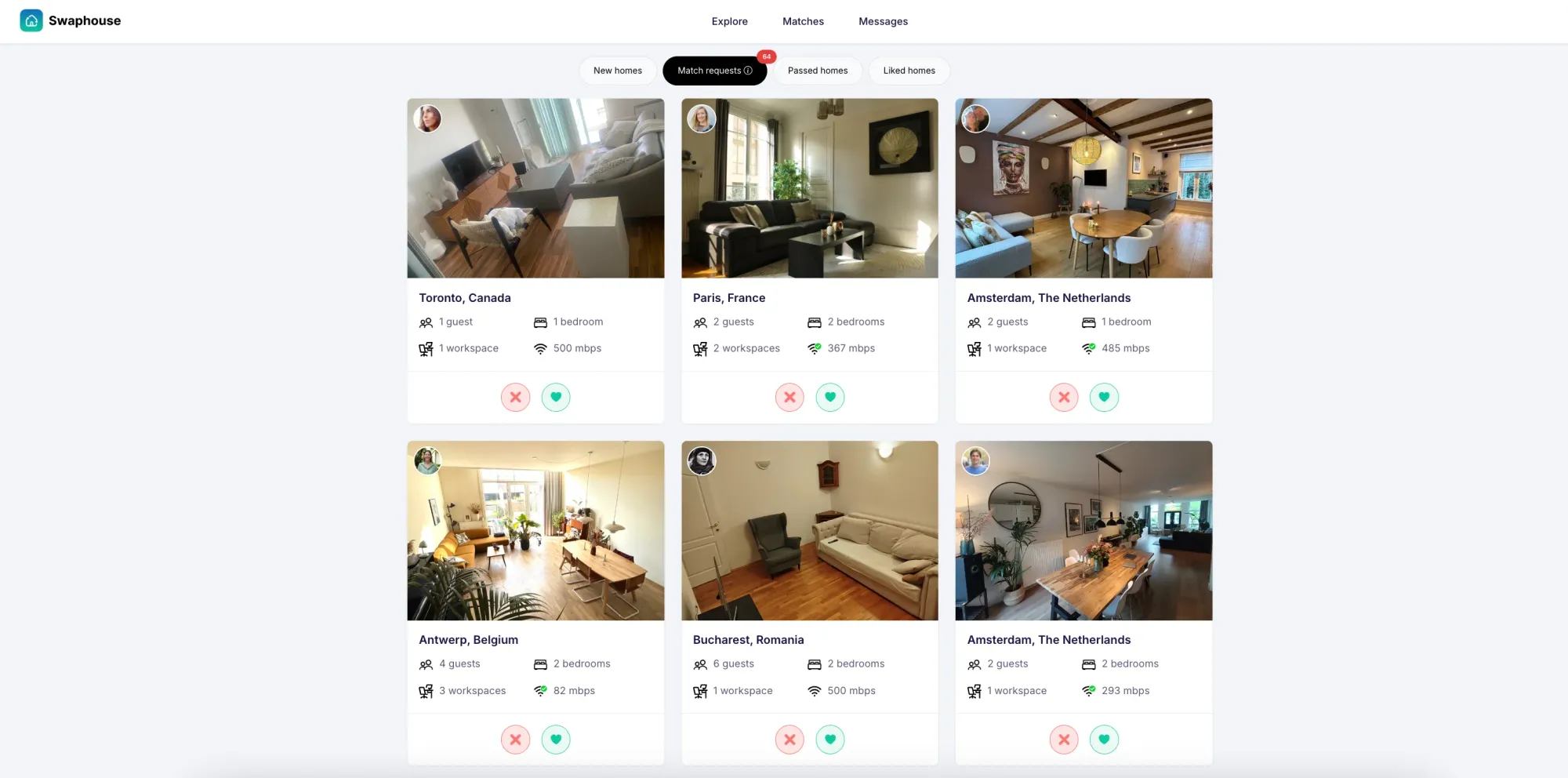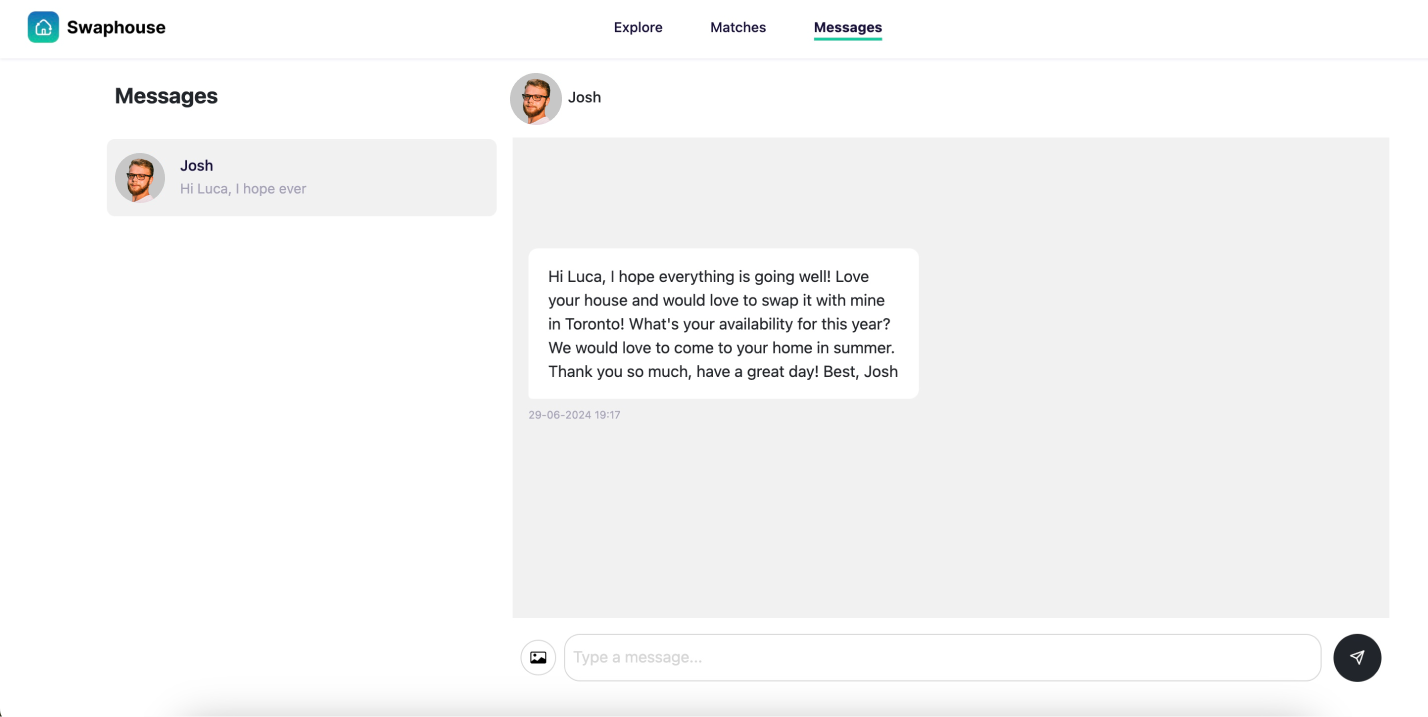House Swapping: What Is It and How Does It Work?

Home swapping has been around for decades, but it’s gaining popularity in remote work and digital nomad circles because it enables extended stays without the burden of hefty rent or hotel bills. In this guide, we’ll explore the basics—what it is, how it works, and why it might be worth trying. From the different types of home swapping arrangements, to how to ensure a successful swap, we’ll walk you through everything you need to know.
What is a House Swap?
House swapping (also known as home swapping or home exchange) is a practice where two parties agree to swap homes for a temporary period. Instead of booking a hotel or a vacation rental, you and another homeowner exchange properties, giving both parties a unique way to experience a new destination without incurring typical accommodation costs.
There are many advantages to home swapping:
- It’s often more cost-effective than traditional accommodation
- You get a local, authentic living experience in a new place
- You can enjoy the comfort and amenities of a real home
- It helps foster a sense of community and cultural exchange
What Different Types of House Swaps Are There?
There are generally two major types of house swaps: reciprocal and non-reciprocal. Within these categories, there are further distinctions that can affect the timing and logistics of your swap. Let’s go over each one in detail.
1. Reciprocal Home Exchange
A reciprocal exchange is exactly what it sounds like: you stay in someone’s home, and they stay in yours. This type of exchange can be simultaneous or non-simultaneous.
Simultaneous Exchange
With simultaneous home exchanges both parties simply swap homes at the same time.
Non-Simultaneous Exchange
When engaging in non-simultaneous home swaps, you host someone in your home on one set of dates, and you stay in their home on another set of dates.
2. Non-Reciprocal Home Exchange
In a non-reciprocal exchange, you don’t necessarily swap homes with the same person you’re visiting. Instead, your stay is often based on a points system, or you may host someone without expecting an immediate stay in their home.
Guest Point Exchange
With a guest-point exchange, you earn “guest points” for hosting someone in your home. In turn, you can use these points to stay at someone else’s home in the platform, rather than the home of the person you hosted.
How Does House Swapping Work?
While, as we discussed, many home-exchange platforms have varying approaches (reciprocal vs. non-reciprocal and simultaneous vs. non-simultaneous) to explain how home swapping works, we will use Swaphouse as an example here as it is one of our favorites for its simplicity and its unique match-based system.
Step 1: Sign up to the house swap platform
Typically, in many home exchange platforms, to be able to use their platform, you would either need to buy an annual subscription fee or pay a cleaning and service fee for each swap. Swaphouse is instead completely free (no annual memberships or fees), and all the homes on their platform are remote-work friendly, which means they are equipped with high-speed Wi-Fi and comfortable workspaces.
To sign up to their platform, all you need is a LinkedIn account and they'll only use your name, email, and profile picture to create your account.

Step 2: List your home
Next, you need to list your home, its features, and any house rules. Be transparent about what you offer (e.g., number of bedrooms, amenities, house rules, remote work amenities, Wi-Fi speeds, etc.). High-quality photos and detailed descriptions will also help you attract the right guests, so make sure to pick the best ones.

Step 3: Browse houses on the platform
Once you have listed your home and it's been approved, you are ready to swap! In many home exchange platforms, you would search for homes in the destinations you’re interested in and look for properties that match your required dates. Swaphouse has instead created a unique match-based system where you get matched to other homeowners only when both have liked each other's houses. It's a bit like a dating app where you start talking only when you get a match. This approach ensures that you only receive messages from homes that you’re actually interested in, so you don’t waste time replying or sending messages to homes and exchange partners that aren’t relevant to you.
Another benefit is that you end up with a collection of homes (your 'matches') that you can contact, knowing they have already expressed interest in yours. This means you have higher chances of a successful swap without having to chase uninterested parties, saving time and effort in the process.

Step 4: Connect and plan your house swap
As we mentioned before, if you use a non-reciprocal exchange platform, you will have a points-based system and wait until you accrue the right points to request an exchange in the place you like. You don't even need to make the house exchange with the same person, so you might deal with different people.
Swaphouse is a reciprocal exchange platform where you swap your home only with the same person. Once you both have liked each other's home, you have a match and can start chatting. This helps you find swaps where interest is mutual.
Make sure to discuss logistics, house rules, local tips, cleaning expectations and key exchange. It's also a good time to get to know each other and build trust for a successful home swap.

Step 5: Enjoy your stay
It's finally time to enjoy your free stay in each other's home. Keep your lines of communication open and don't forget to respect the house rules of your host (or swap partner), and treat their property as you’d like them to treat yours. This is super important!
Is Home Swapping Worth It?
Besides the clear financial advantages (like saving money on housing) there are several deeper reasons why people love this form of travel.
You Don’t Fuel the Housing Crisis
Short-term rentals have been criticized for contributing to housing shortages and driving up rent in popular cities. By swapping your home, you’re simply exchanging spaces that are already used as primary residences, so you’re not taking long-term rental units off the market or exacerbating local housing crises.
It's Good for the Environment
House swapping can be considered a form of socially responsible travel as it can lead to a reduced environmental impact by reusing existing resources instead of creating demand for new constructions or large-scale hotels.
You Are Part of the Sharing Economy
The sharing economy is all about using resources more efficiently by lending, renting, or swapping items and services. By participating in a home swap, you embrace collaboration and get to experience the satisfaction of trusting in the good in other people. Previous swappers have cited having a “redeemed trust in humanity” whenever they home swap, which is a very gratifying feeling.
You Contribute to Boosting Local Economies
When you stay in a neighborhood through a home exchange, you’re more likely to spend locally by visiting markets, cafés, or shops, thereby directing your travel spending into the local economy. This supports small businesses and helps spread tourism across the city, bringing economic benefits to lesser-known neighborhoods rather than concentrating them solely in tourist hotspots.
You Are Part of a Community of Home Swappers
One of the most appealing aspects of home swapping is the sense of belonging it creates. It’s not just about free accommodation but also connecting with people who value trust, openness, and cultural exchange. Many home swappers share common values of generosity, curiosity, and respect for other cultures. It’s not uncommon to form potential long-term friendships and even arrange reciprocal visits in the future.
You Get To Travel for Less
It’s hard to ignore the cost benefits of home swapping, and it's often the most enticing factor for first-timers. By avoiding traditional hotel or rental costs, you can stay longer or redirect your accommodation budget toward experiences such as tours, cultural events, or dining.
House Swapping FAQs
How Much Does Home Swapping Cost?
It's cheaper than hotels and short-term rentals, although you will still have to pay your travel expenses. Some platforms, like Swaphouse, are free, while others charge memberships or service fees after your stay. With these platforms, you can expect potential costs for cleaning, deposits, or added insurance.
What Are The Rules for Home Swapping?
Platforms typically emphasize honesty, respect, and clear communication. Make sure to specify your own house rules (e.g., smoking, cleaning) and follow platform guidelines for reviews, disputes, and identity verification.
Can You Bring Pets During Your Home Swap?
This varies by host and platform rules. Some listings allow pets, others don’t. Always confirm in advance and be honest about your furry friends to avoid surprises.
Is Home Swapping Safe?
Most swaps are safe when using reputable platforms with verification and reviews. Lock valuables if worried, and communicate openly with your swap partner. We recommend a video call as it will help you build trust before finalizing plans.
Do You Need Home Insurance Before Exchange?
It’s not always mandatory, but highly recommended. Most homeowner or renter policies cover occasional guests. Still, it's better to verify with your insurer. If needed, add a rider or short-term coverage for peace of mind.
What if Your House Gets Damaged?
Some platforms offer security deposits or insurance options to provide peace of mind. It's a good idea to document your home’s condition before and after the swap to avoid disputes. Fortunately, most swaps go smoothly without damage. Simultaneous swaps, in particular, encourage mutual care, as both parties have a vested interest in treating each other's homes respectfully.
Ready To Try House Swapping?

Join our global
digital nomad community
Join us for free
Freaking Nomads is supported by you. Clicking through our links may earn us a small affiliate commission, and that's what allows us to keep producing free, helpful content. Learn more





 Travel tips, hacks, and news
Travel tips, hacks, and news Exclusive travel discounts
Exclusive travel discounts Offers and promotions
Offers and promotions Digital nomad inspiration
Digital nomad inspiration Latest articles form our blog
Latest articles form our blog